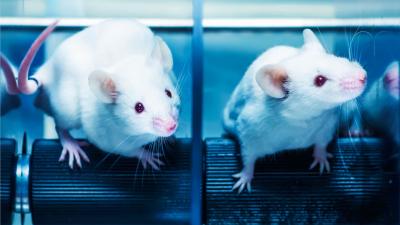Let’s Bring Government-Funded Animal Experiments Out of the Shadows

We have no idea how many animals are used in U.S. government-funded laboratories. But a new federal bill would change that!
Estimates of the number of animals used each year in U.S. labs vary wildly—from 10 million to 110 million. Most of those animals are used by federally funded labs, but because the federal government does not collect accurate information, the public is in the dark. In comparison, the governments of other countries—including the United Kingdom, Canada, and the entire European Union—collect and publish detailed information on how many animals are used in research and testing.
The National Institutes of Health (NIH) has stated that it is committed to reducing its reliance on animals, and the scientific community is supposed to be committed to the replacement and reduction of animals in labs. But Americans have no idea whether the United States is achieving that goal on a national level.
Currently, NIH only collects animal numbers every four years and does not request the total number of animals used. Instead, the agency simply collects a crude estimate. And the information NIH does collect is only available through Freedom of Information Act requests, which take months to fulfill. In contrast to NIH, the U.S. Department of Agriculture (USDA) accurately tracks those animals covered under the Animal Welfare Act, but that law only covers about 5% of animals used in experiments.
Thankfully, new federal legislation would fix this problem. The Federal Animal Research Accountability Act, led by Reps. Lisa McClain (R-Mich.) and Don Davis (D-N.C.), would require that all labs receiving funds from U.S. Public Health Service agencies annually complete a one-page form that includes the total number of animals bred, housed, and used in the previous year, sorted by species and level of pain and distress. NIH would then make those annual reports available to the public via an agency website.
Further Reading
Myths and Facts About the Issue
Myth: The federal government already collects animal numbers.
Fact: USDA only collects information on the small number of species covered by the Animal Welfare Act—about 5% of all animals used in labs funded by NIH and other agencies. For the other 95%, NIH only collects crude estimates every four years.
Myth: Accurate reporting will not improve animal welfare.
Fact: The scientific community widely believes in the reduction and replacement of animals because of welfare concerns related to breeding, housing, and using animals. As Dr. Larry Carbone, a research veterinarian with more than 40 years of experience at Cornell University and the University of California, San Francisco, stated: “How can you measure your progress … if you’re not even counting the animals?”
Myth: Reporting of animal numbers is burdensome for labs.
Fact: NIH already directs funded facilities to “establish mechanisms to document and monitor numbers of animals acquired, born, and used”—but the agency does not ask or require facilities to report the information. A reporting system could be as simple as filing an annual one-page form using the information NIH already tells facilities to collect. In addition, the top 100 recipients of NIH funding in the U.S. already provide information on animal numbers to a private accrediting body. The Federal Animal Research Accountability Act would create no burdens.
Myth: Greater reporting could reveal proprietary information.
Fact: The legislation only covers general categories of how animals are used. It would not require the collection of any information that could be considered proprietary.








